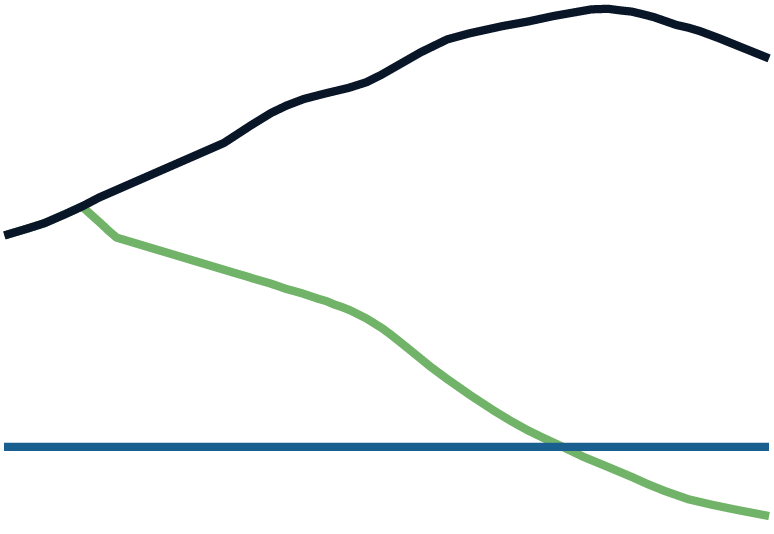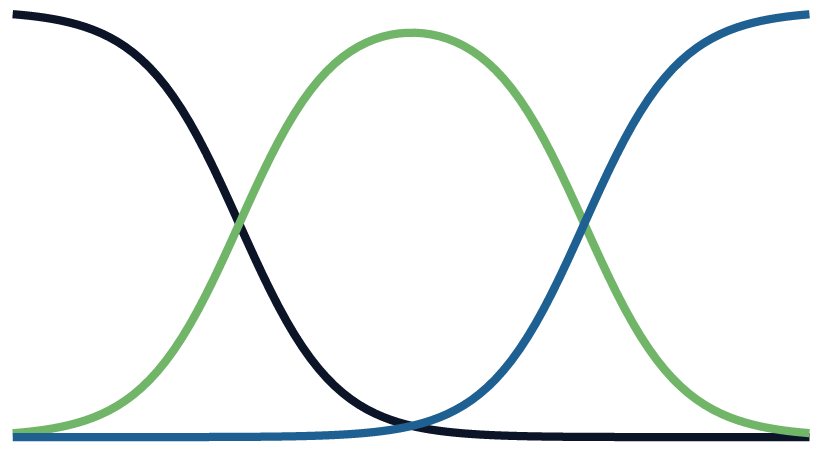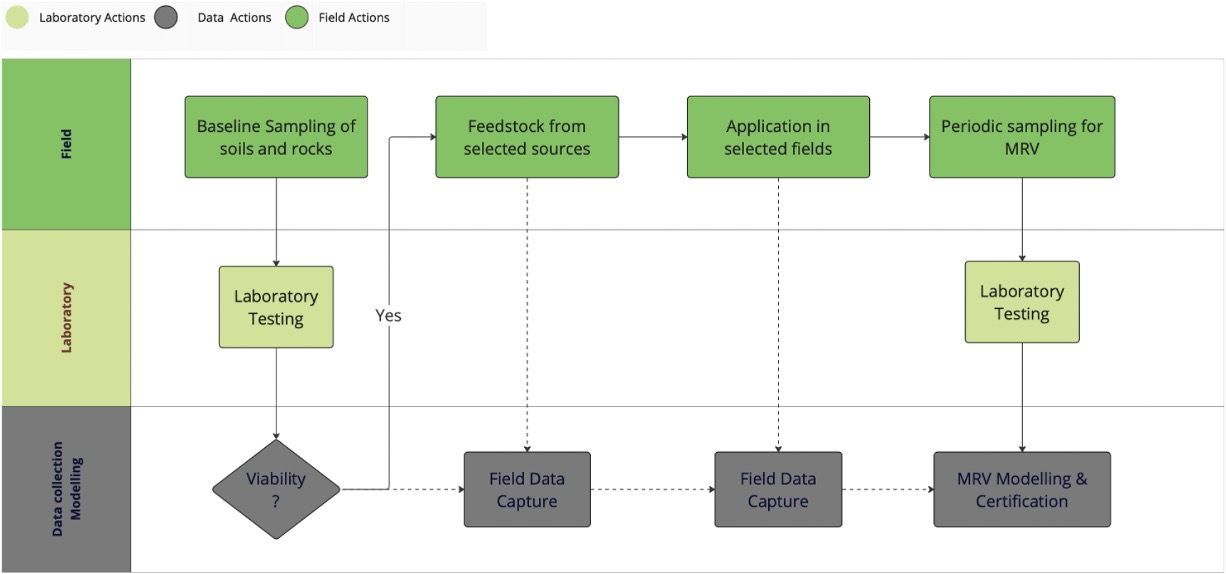Nature-based carbon dioxide removal
Enhanced Rock Weathering is a scalable and durable strategy for removing carbon dioxide from the atmosphere

The challenge
Climate change remains a critical global issue, driven predominantly by the accumulation of greenhouse gases, such as carbon dioxide (CO2), in the atmosphere. While reducing new carbon emissions is crucial, it alone may not be sufficient to prevent the worst effects of climate change. Scenarios for keeping global warming below 2°C requires both significant reductions in emissions and the removal of existing CO2 from the atmosphere.
Rock Weathering
Weathering is a natural process where rocks and minerals break down, reacting with CO2 in the presence of water to form bicarbonate ions. These ions are eventually washed into the oceans, resulting in long-term carbon storage. This natural geochemical process regulates the Earth’s carbon cycle and climate over geological timescales.


How Enhanced Rock Weathering works
Enhanced Rock Weathering (ERW) is the practice of applying crushed rocks and silicate minerals to agricultural land or soil to accelerate rock weathering. Mati uses basalt applied to cropland, partnering with smallholder farmers to practice ERW as a Carbon Dioxide Removal (CDR) strategy at scale in the Global South.
As Mati’s basalt dissolves, cations such as calcium and magnesium (Ca2+ and Mg2+) are released into the groundwater. The addition of cations to the ground water results is a series of chemical reactions involving carbonic acid. Through this process CO2 gas in the soil is converted to dissolved bicarbonate (HCO3–). Carbonic acid (H2O + CO2 = H2CO3) is formed naturally in soils by plant respiration. Conversion of dissolved carbonic acid sources to bicarbonate effectively removes CO2 from the atmosphere. Next, the bicarbonate percolates into streams and rivers, and is later delivered to the oceans. Once bicarbonate is transported to deep aquifers or deposited in the ocean it stably stores carbon for >10,000 years.
The feedstock material (Basalt)
Basalt, a volcanic rock rich in silicate minerals, is an ideal material for ERW due to its effectiveness in reacting with CO2 and abundance, making it a cost-effective choice. Its application in agriculture not only aids in carbon removal but also improves soil health by supplying essential minerals and correcting soil pH levels.

The deployment process


Monitoring, Reporting and Verification (MRV)
Mati uses cutting-edge methods to monitor basalt weathering directly in the fields. This includes advanced soil analyses using Inductively-Coupled Plasma Mass Spectrometry (ICP-MS) to detect small shifts in elemental concentrations within soil. By tracking these changes, we can accurately calculate the mass of basalt weathered and the corresponding CO2 drawdown. We strictly follow a cradle-to-grave approach to assess the durability of our CDR. To do this we have models to predict the fate of bicarbonate in farmers’ fields after ERW deployments, and how dissolved inorganic carbon travels through rivers and oceans.
Selected Mati publications
Peer-reviewed articles
- A tool for assessing the sensitivity of soil-based approaches for quantifying enhanced weathering: a US case study
- Enhanced weathering in the US Corn Belt delivers carbon removal with agronomic benefits
- Initial validation of a soil-based mass-balance approach for empirical monitoring of enhanced rock weathering rates
Whitepapers
